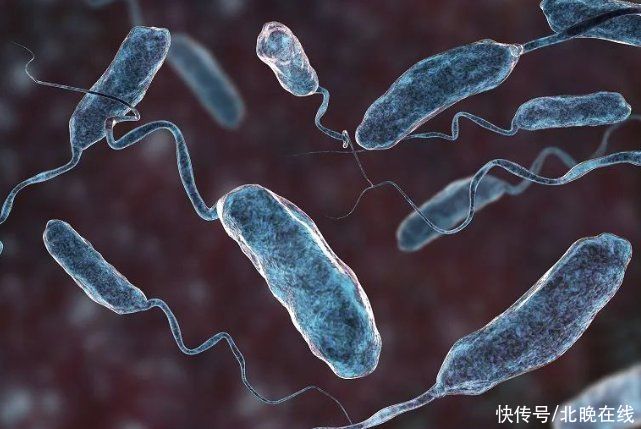內容目錄
The Health Bureau of Wuchang District, Wuhan City, Hubei Province announced on the 11th that a student from Wuhan University was diagnosed with cholera. The professional appraisal of the disease control department pointed out: The serological agglutination test of this case was positive for O139, the diagnosis was cholera, and the virulence gene was negative.
Some netizens left a message asking: What does negative virulence gene mean?
Literally speaking, the CDC conducted a genetic test on the cholera-causing strain, and the result was “negative”, which means that this strain does not have a virulence gene, then Why does it still cause diarrhea in patients? What does it mean to be positive for O139 in the serological agglutination test? A reporter from Science and Technology Daily contacted and interviewed Guo Wei, deputy director of the Department of Infectious Diseases of Tongji Hospital of Huazhong University of Science and Technology, to answer questions.
What is a virulence gene?
The name of the gene is basically related to the function of the protein it encodes. The “virulence” in the virulence gene reported by the health department this time refers to the cholera enterotoxin of Vibrio cholerae. The virulence gene is the gene encoding the cholera enterotoxin.
“Cholera enterotoxin is the main pathogenic factor in Vibrio cholerae, and it is the most toxic toxin known to cause diarrhea.” Guo Wei told a reporter from Science and Technology Daily Said that if the infected strain has this virulence gene, the bacteria will secrete cholera enterotoxin to attack the intestinal mucosal cells of the patient, the cells will continue to secrete fluid, and the gastrointestinal tract will discharge a lot of fluid like “opening the gate to release water”; if infected If the person does not get timely hydration, it will lead to severe dehydration of the body.
It is conceivable that patients infected with Vibrio cholerae with virulence genes will have very severe clinical symptoms. “Dehydration and necrosis of a large number of cells will also lead to some serious complications, including renal failure, hyperkalemia, arrhythmia, etc., if not treated in time, it will be life-threatening.” Guo Wei said.
Does negative mean “non-toxic”?
So, if the virulence gene of Vibrio cholerae does not exist, is it avirulent? it’s not true.

“Vibrio cholerae also secretes other substances that are harmful to the human body, such as endotoxin, hemolysin, hemagglutinin, etc.” Guo Wei said, In particular, the role of endotoxin in pathogenesis should be paid attention to, and cases of sepsis and meningitis caused by infection in infants and young children have also been reported.
“However, most patients can recover without using antibiotics to sterilize if they rehydrate in a timely manner.” Guo Wei emphasized that although it is a bacterial infectious disease, the most important thing in the treatment of cholera is rehydration therapy. Done poorly, the patient can be fatal. Antibiotic therapy can only shorten the course of treatment and reduce the frequency of diarrhea, and is an adjunct therapy to fluid therapy. Therefore, the abuse of antibiotics is not advocated.
The “code word” of virulence genes
Then why does the disease control department pay special attention to “virulence genes” and emphasize that it is negative? It turns out that the virulence gene hides a professional “code word”.

“The greatest significance of virulence genes is not to answer the problem of symptoms, but to the problem of bacterial transmission.” Guo Wei told a reporter from Science and Technology Daily , the virulence gene is negative, which means it is difficult to cause a pandemic.
The virulence gene has epidemiological significance, negative means that the transmission is very low and the possibility of epidemic is low. If it is positive, it means that it may lead to a pandemic. Measures need to be more stringent.
Why are virulence genes related to transmissibility?
A review article published in the Proceedings of the National Academy of Sciences in 2003 showed that Vibrio cholerae were grouped according to their O antigens, and at least 206 serogroups of Vibrio cholerae ( conceivable as different Vibrio families).
Before O139, O1 was the only “family” that caused a pandemic. Moreover, epidemic-causing and virulence gene positivity never occurred at the same time.
In 1992, Bangladesh had a cholera epidemic that infected more than 100,000 patients, of which 124 strains were isolated but not O1.
“Vibrio cholerae has flagella, like a small motor, in the dark field microscope, it will run non-stop, and the exercise is particularly strong, but as long as the agglutinating serum against this serogroup is added,’ The motor is locked and cannot move.” Guo Wei said that the antiserum corresponding to different serogroups is different, so it can be used to preliminarily identify which “family” Vibrio cholera belongs to.
It has been found that the Bangladeshi epidemic-causing strain can still run after adding the agglutinating serum corresponding to O1. A new strain that was both epidemic and not O1 was discovered. The aforementioned paper commented that the notion that non-O1 serogroups do not cause large outbreaks of diarrhea is broken.
Despite the emergence of the new O139, it follows the pattern of having a virulence gene for widespread prevalence.
“It is also logically well understood that bacteria with positive virulence genes can secrete cholera enterotoxin, which can cause severe diarrhea; This will lead to more follow-up infections.” Guo Wei said, this is very similar to the “seeding” ability of plants, with the ability to spread, it will lead to a pandemic, and poor ability to spread will only lead to very few infections. Therefore, the presence or absence of virulence genes is one of the keys to determine whether cholera can become a pandemic.
Source: Science and Technology Daily
Process Editor: TF099